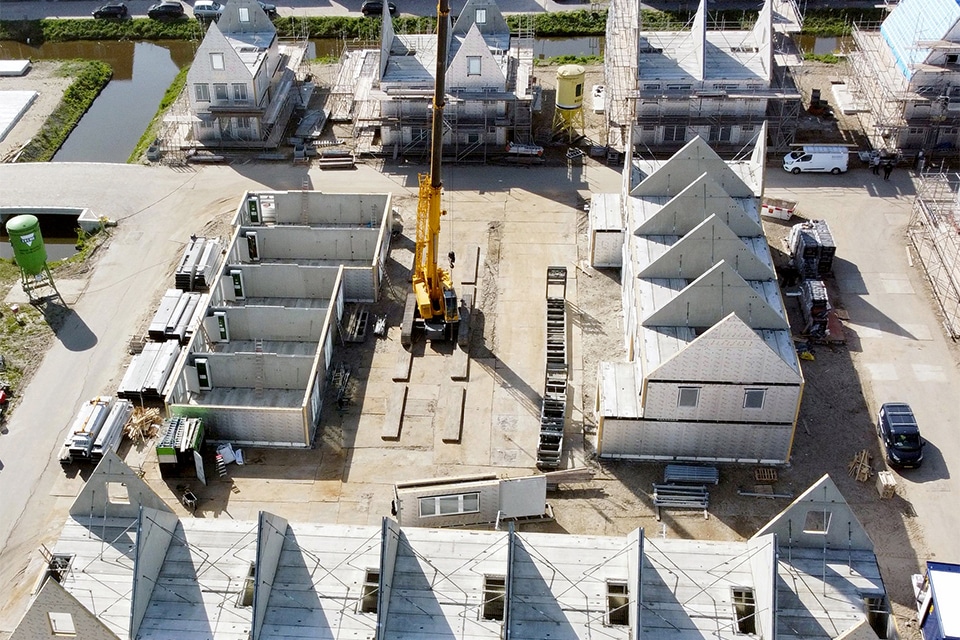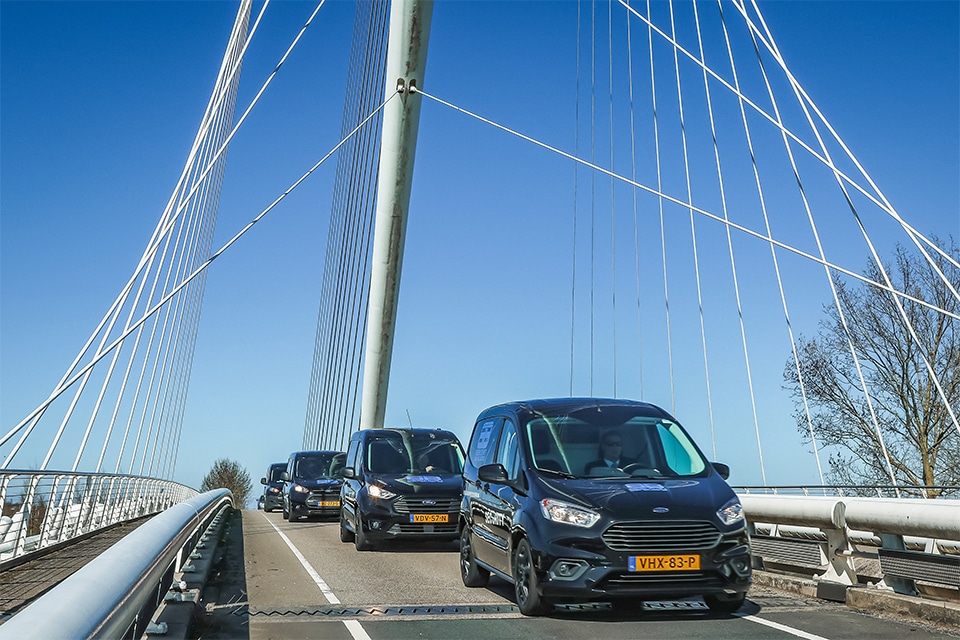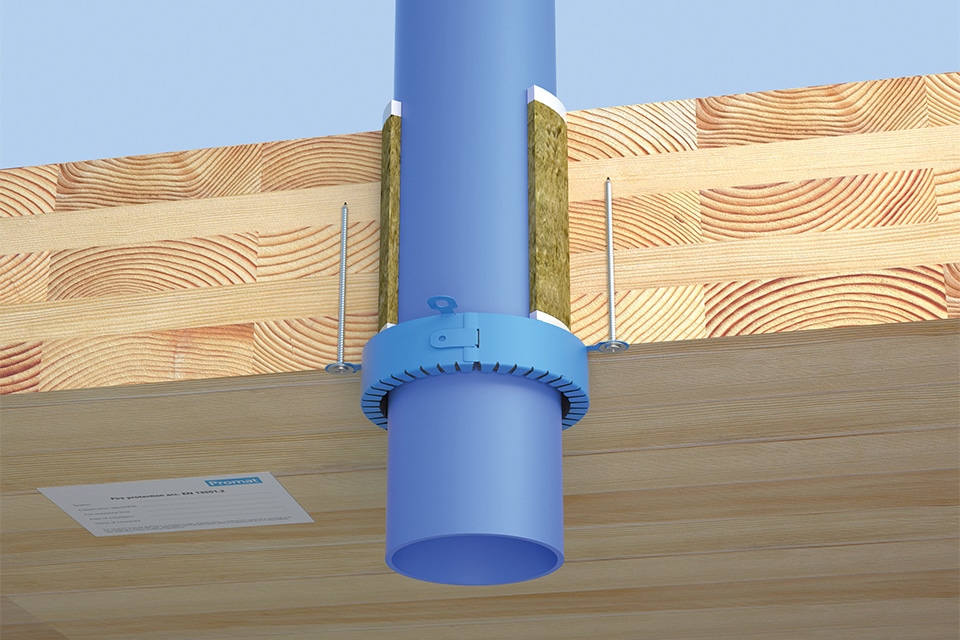
Extended A16 should improve regional accessibility and living comfort
After a long lead time and a first year of concrete work, the new A16 segment above Rotterdam is taking shape here and there. From the air, the route is already quite visible, the first structures are in preparation and the first million cubic meters of sand have been delivered. By the end of 2024, the new 11-kilometer stretch of highway is scheduled to open to traffic.
The new highway connects the A13 at the airport to the A16 at Terbregseplein. This splits the north-south and east-west connection at this square. The intended result is less congestion on the A20 between Kleinpolderplein and Terbregseplein, less cut-through traffic on local roads in the surrounding neighborhoods and better accessibility of the rapidly growing municipality of Lansingerland. The project, commissioned by Rijkswaterstaat, is being carried out by De Groene Boog, a consortium of Besix, Dura Vermeer, Van Oord, John Laing, Rebel and TBI (Mobilis, croonwolters&dros) operating under a Design, Build, Finance & Maintain contract with a 20-year maintenance obligation.

Bat screens at the tunnel site where trees have been cut down (Image: Tjerk van Duinen).
Soft soil
From the construction shack near Vliegveldweg, Besix project manager Daniel van Dorsselaer has a good view of some of the many sub-works. "This project involves large numbers. On May 20, we celebrated that the first of four million cubic meters of sand was brought in. The sand will be used as a pre-load to compress the weak subsoil. This is needed for the new highway but also for temporary infrastructure for work traffic. We are not allowed to use the underlying local road network, nor do we have any motive to do so. A stationary truck costs money, which is also why we mainly drive outside rush hour."
Save time
The huge amount of sand comes from the Markermeer and the North Sea and is sailed to four unloading locations. From there it goes by truck to the construction sites. Van Dorsselaer: "This is done very carefully at set times and with adjustments if our monitoring indicates that starting fifteen minutes earlier saves time. Nitrogen problems and PFAS have caused almost a year's delay; we are trying to recapture that with new smart measures."

A13-A16 connection. (Image: The Green Arch)
Mounds
In several places, the first traces of the new highway are already visible. Preparations for the construction of the abutments of the fly-over at Terbregseplein are in full swing, at the overpass of the President Rooseveltweg near Ommoord the mound and temporary work bridge have been constructed, the first hectometers of sheet piling are in the ground for the construction of the more than two kilometers long tunnel at the Bergse Bos, and for the rest it is mainly a matter of transporting sand, lots of sand. Van Dorsselaer: "We are making work with work. If a temporary structure or sand body is no longer needed, the sand will be used elsewhere."
Sustainable
The Green Arch - the name gives it away - owes its winning of the tender in large part to its extensive attention to sustainability and its responsibility for the living environment and local residents. That includes more than building a separate infrastructure for work traffic and smart traffic management. The entire road and tunnel will be energy-neutral through the use of solar panels and smart tunnel installations. There will be noise barriers four meters high. Temporary meat mouse screens near the tunnel will ensure that these animals can still find their way despite the removed trees during construction and the pile driving will not take place during the breeding season. Van Dorsselaer: "We are working with an EMVU tender, the Economically Most Advantageous Execution. The Green Arch has a fund to keep looking for improvements in the execution. For example, the thousands of transports are driven on HVO, biodiesel. This is more expensive, but fits perfectly with the values of the Green Bow."

Daniel van Dorsselaer at the sheet pile walls for the tunnel trench: "Nitrogen issues and PFAS caused almost a year's delay, which we are trying to recapture with new, smart measures." (Image: Tjerk van Duinen)
Availability
Quite a few challenges await the combination. The Terbregseplein interchange is a major job in itself, as is the tunnel with thousands of piles. There will be exits that connect to the N209 (Bleiswijk) and N471 (Berkel Rodenrijs), which must also be done with as little traffic disruption as possible. The HSL and Randstadrail have to be bridged in quick succession, and in the process the tunnel foundation of the HSL has to be spared (requiring piles up to 60 meters deep). And the connection to the A13 is also a complex operation, with only a few weekend closures available. Van Dorsselaer concludes, "The end result will be there in a few years. It should all work very well. The Green Arch will be responsible for maintenance and availability for twenty years. If there is water on the road surface, subsidence occurs or if there are other culpable blockages, we will be cut from our availability payment. That's an excellent incentive to do the work optimally."




